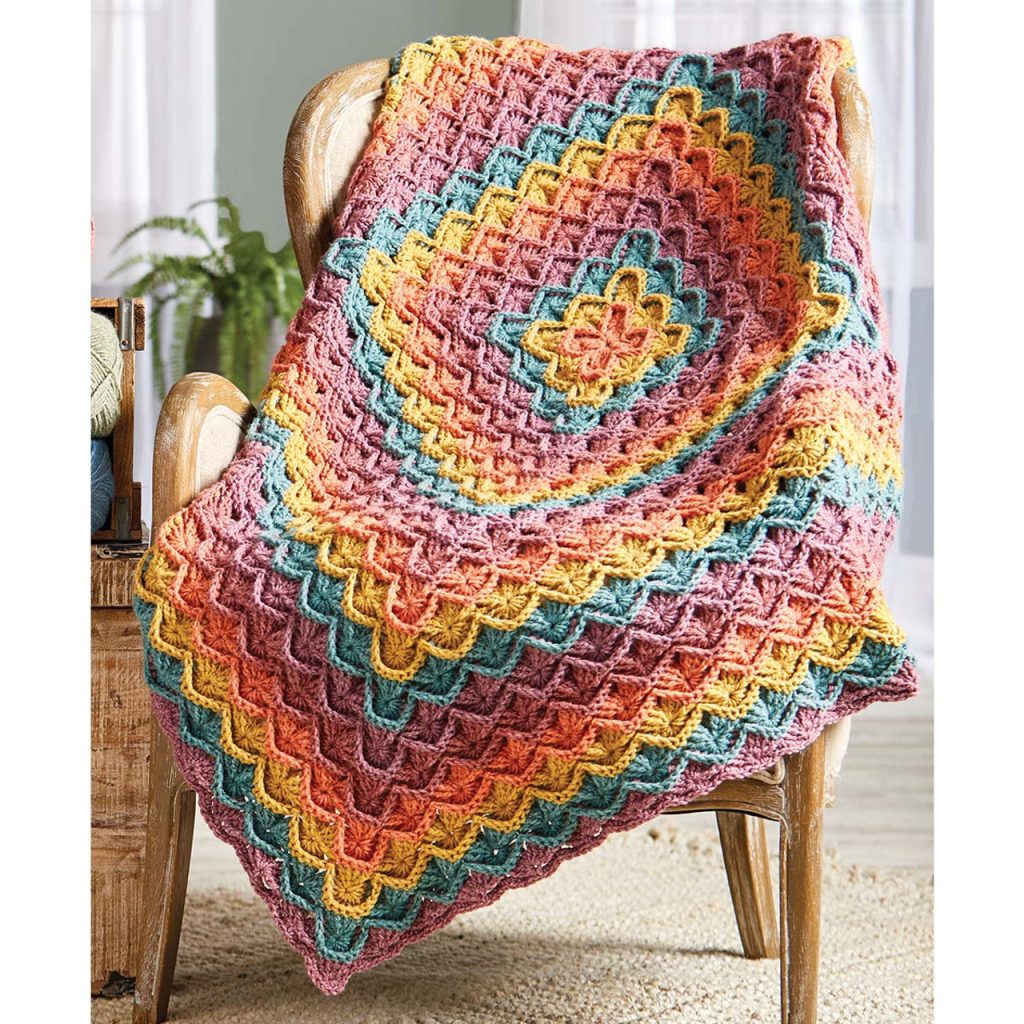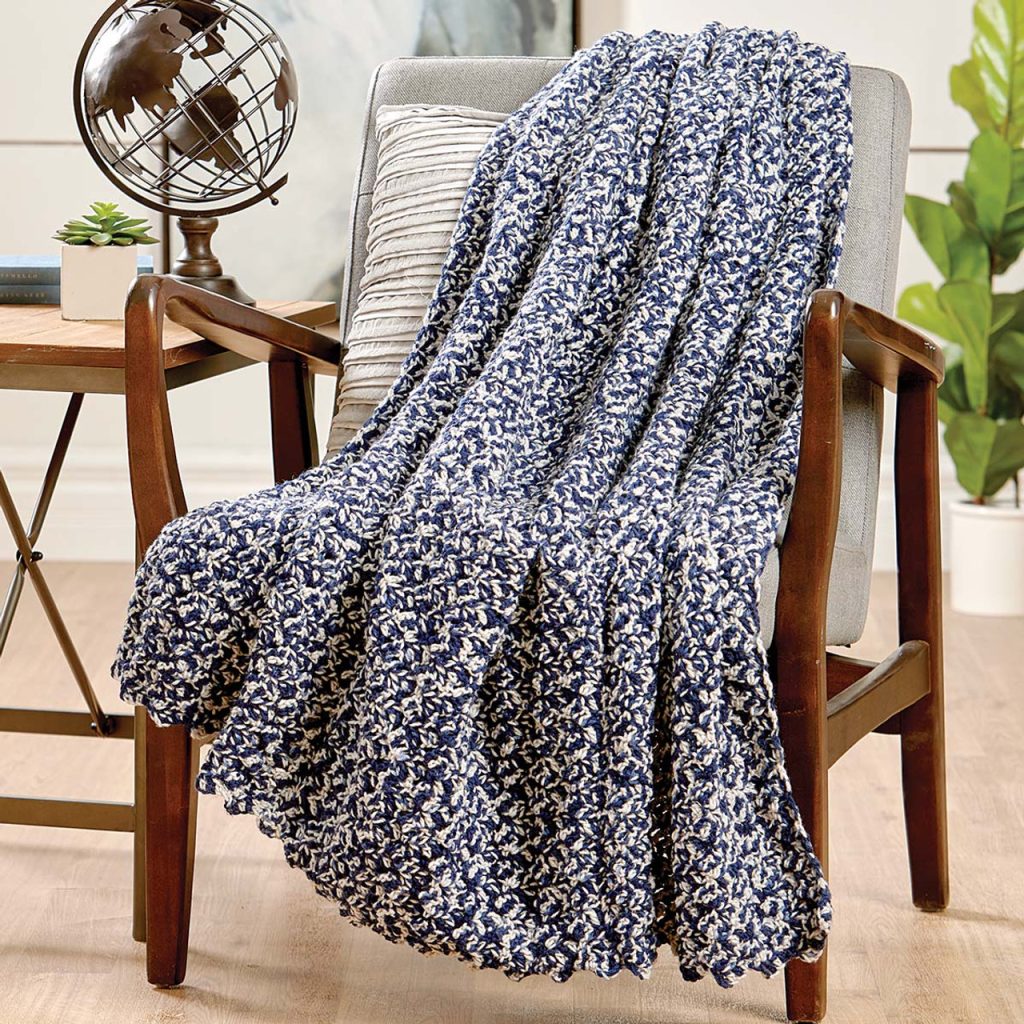Introduction
Afghans blanket, known for their warmth, versatility, and decorative appeal, are cherished handmade treasures that can be crocheted or knitted using a variety of stitches and patterns. Whether you’re a beginner eager to embark on your first afghan project or a seasoned crafter looking to expand your skills, this comprehensive guide covers essential techniques, popular patterns, and practical tips to help you create a beautiful and cozy afghan.

Choosing Your Craft: Crochet vs. Knitting
Crochet
- Speed: Crochet generally works up faster than knitting due to using a single hook.
- Texture: Offers a wider range of textural possibilities with stitches like popcorns, shells, and bobbles.
- Ease of Repair: Mistakes are often easier to fix in crochet projects.
Knitting
- Drape: Knitted fabric tends to have a softer drape, making it great for lightweight afghans.
- Evenness: Stitch patterns can appear more uniform and consistent in knitting.
- Complexity: Advanced knitting techniques allow for intricate cable and lace patterns.
Selecting Yarn and Hooks/Needles
- Yarn: Choose a yarn suitable for the intended use (e.g., wool for warmth, cotton for breathability). Consider the weight of the yarn (from superfine to jumbo) and the care instructions.
- Crochet Hook: Hooks come in various materials (aluminum, plastic, bamboo) and sizes matched to the yarn weight. Start with a comfortable grip size.
- Knitting Needles: Straight needles work for smaller projects, but circular needles can be more comfortable for larger afghans, even if you’re not knitting in the round.
Basic Techniques
Crochet
- Chain (ch): The foundation of most crochet projects.
- Single Crochet (sc): The simplest stitch; forms a dense fabric.
- Double Crochet (dc): Creates a looser, more open织物.
Knitting
- Cast On: Start your project by creating the initial row of loops on your needle.
- Knit Stitch (k): Basic stitch where the needle goes through the front of the loop from left to right.
- Purl Stitch (p): Complementary to the knit stitch; creates a different texture on the fabric’s face.
Popular Afghan Patterns
Granny Square Afghan
A classic crochet pattern composed of small squares joined together, often featuring a variety of colors and textures.
Chevron Afghan
Uses a repetitive V-stitch pattern (in crochet) or a series of increasing and decreasing stitches (in knitting) to create a zigzag effect.
Basketweave Afghan
Achieved through alternating blocks of knit and purl stitches (knitting) or post stitches (crochet), creating a woven texture.
Tips for Beginners
- Start Small: Before diving into a full-sized afghan, practice with smaller projects like scarves or dishcloths to get comfortable with the basics.
- Choose Simple Patterns: Opt for patterns with clear instructions and minimal stitch variations until you gain confidence.
- Use Stitch Markers: These help keep track of pattern repeats, edges, and decreases/increases, especially in complex designs.
- Check Your Gauge: Matching the recommended gauge ensures your afghan turns out the right size and helps prevent running out of yarn mid-project.
- Take Breaks: Large projects can be physically taxing; regular breaks help prevent strain injuries and maintain enthusiasm.
- Join a Community: Online forums, local crafting groups, or social media platforms can provide inspiration, advice, and encouragement.
Creating an afghan blanket is a rewarding endeavor that combines creativity with practicality. By mastering the basics, experimenting with different patterns, and practicing patience, you’ll soon have a handcrafted treasure to cherish for years to come. Remember, every stitch tells a story, and the process of making an afghan is as much about the journey as the finished product.

Getting Started
Choosing Yarn and Needles/Hooks
- Yarn: Select a yarn that suits the desired warmth and texture of your blanket. Acrylic yarn is popular for its affordability and easy care, while natural fibers like wool and cotton offer different textures and warmth levels.
- Needles/Hooks: For knitting, choose needles sized appropriately for your yarn weight. For crochet, select a hook size that complements your yarn choice, typically listed on the yarn label.
Learning Basic Stitches
- Crochet: Start with basic stitches like chain (ch), single crochet (sc), double crochet (dc), and treble crochet (tr). These form the foundation for most crochet patterns.
- Knitting: Begin with fundamental stitches such as knit (k) and purl (p). Learning to cast on, knit, purl, and bind off are essential for most knitting projects.
Understanding Gauge
- Gauge: Measure your stitches and rows per inch to ensure your blanket turns out the desired size. Adjust needle/hook size if necessary to match the gauge specified in your pattern.
Crocheting an Afghan Blanket
Techniques and Patterns
- Basic Crochet Stitches:
- Single Crochet (SC): Simple and tight, ideal for dense blankets.
- Double Crochet (DC): Quick to work up, creating a looser fabric suitable for lighter blankets.
- Granny Squares: Create individual motifs that can be joined together to form a blanket.
- Corner-to-Corner (C2C): Worked diagonally from one corner to the opposite corner, forming a textured pattern.
- Patterns for Beginners:
- Striped Blanket: Alternate colors or textures using basic stitches for a classic look.
- Ripple Stitch: Creates a wave pattern with increases and decreases, adding visual interest.
- Shell Stitch: Combines multiple stitches to create a scalloped edge effect.
- Tips for Crocheting:
- Joining Motifs: Use slip stitches or single crochet to join squares or motifs together neatly.
- Edging: Add a border around your blanket for a finished look, using simple stitches or more decorative patterns.
Knitting an Afghan Blanket
Techniques and Patterns
- Basic Knitting Stitches:
- Garter Stitch: All rows knit; creates a textured, stretchy fabric.
- Stockinette Stitch: Alternates knit rows with purl rows; smooth on one side, bumpy on the other.
- Seed Stitch: Alternates knit and purl stitches within the same row, creating a textured pattern.
- Patterns for Beginners:
- Striped Blanket: Knit alternating color bands or stripes using garter stitch for a straightforward design.
- Basketweave Pattern: Combines blocks of knit and purl stitches to create a woven texture.
- Chevron Blanket: Zigzag pattern created by increases and decreases, suitable for adventurous beginners.
- Tips for Knitting:
- Adding Borders: Knit a simple garter or seed stitch border to frame your blanket.
- Blocking: After finishing, block your blanket by wetting it and laying it flat to dry, ensuring even stitches and a smooth finish.
General Tips for Both Crafts
- Read Patterns Carefully: Understand abbreviations and symbols used in crochet or knitting patterns.
- Practice Tension: Keep your tension consistent to ensure uniformity in your stitches.
- Take Breaks: Large blankets can be time-consuming; take breaks to prevent hand fatigue.
- Experiment: Once comfortable with basic stitches, explore more complex patterns and techniques to expand your skills.

Advanced Techniques
Crochet
- Tunisian Crochet: A hybrid technique that produces a fabric similar to knitting but worked with a long crochet hook. It allows for intricate stitch patterns and colorwork.
- Irish Lace: Intricate, openwork crochet patterns that create delicate, lacy designs, often incorporating picots and filet crochet.
Knitting
- Cables: Twisting stitches to create a braided or woven appearance adds depth and texture to your afghan.
- Lace Knitting: Using yarn overs and decreases to form holes and intricate patterns, resulting in a light, airy fabric perfect for summer afghans.
Conclusion
Whether you choose to crochet or knit, creating an afghan blanket is a wonderful way to develop your crafting skills while producing a cozy, handmade item. Start with simple projects and gradually advance to more intricate patterns as your confidence grows. Remember, the journey of making an afghan blanket is as rewarding as the finished product itself. Enjoy the process and embrace the creativity that comes with crafting your own unique blanket.
